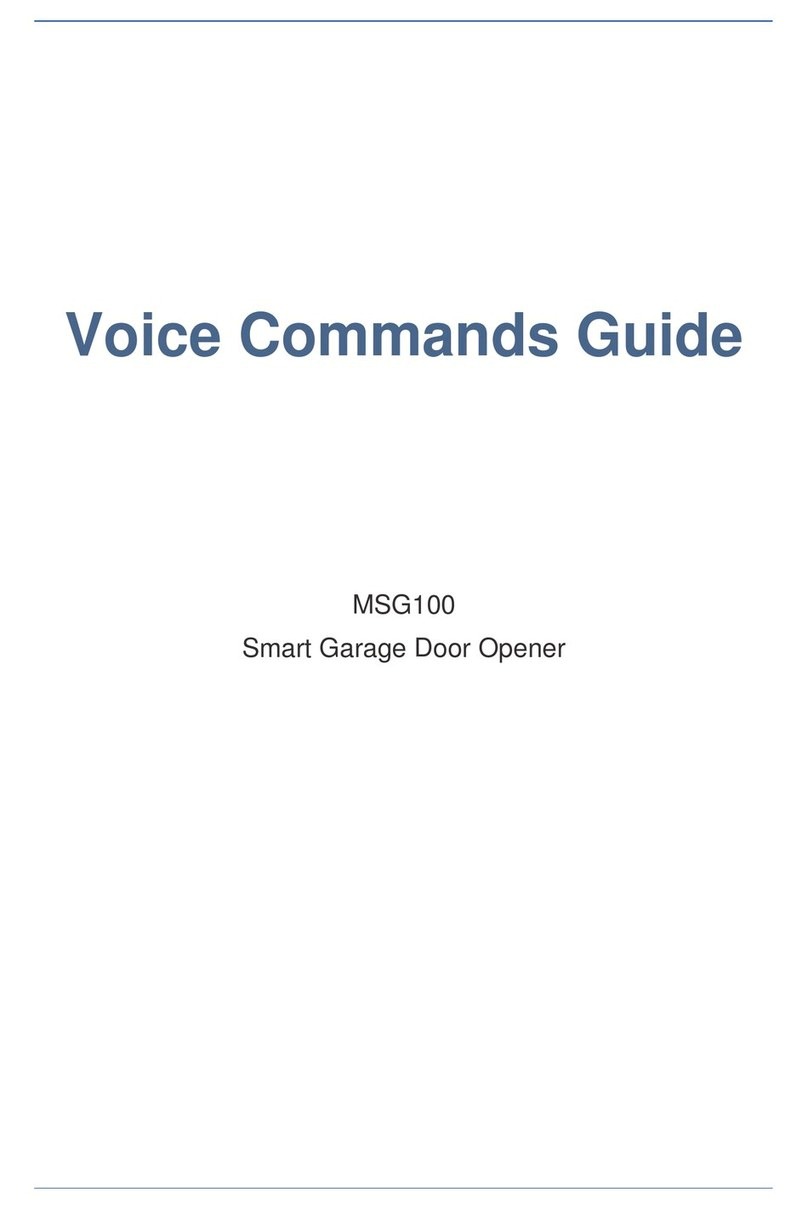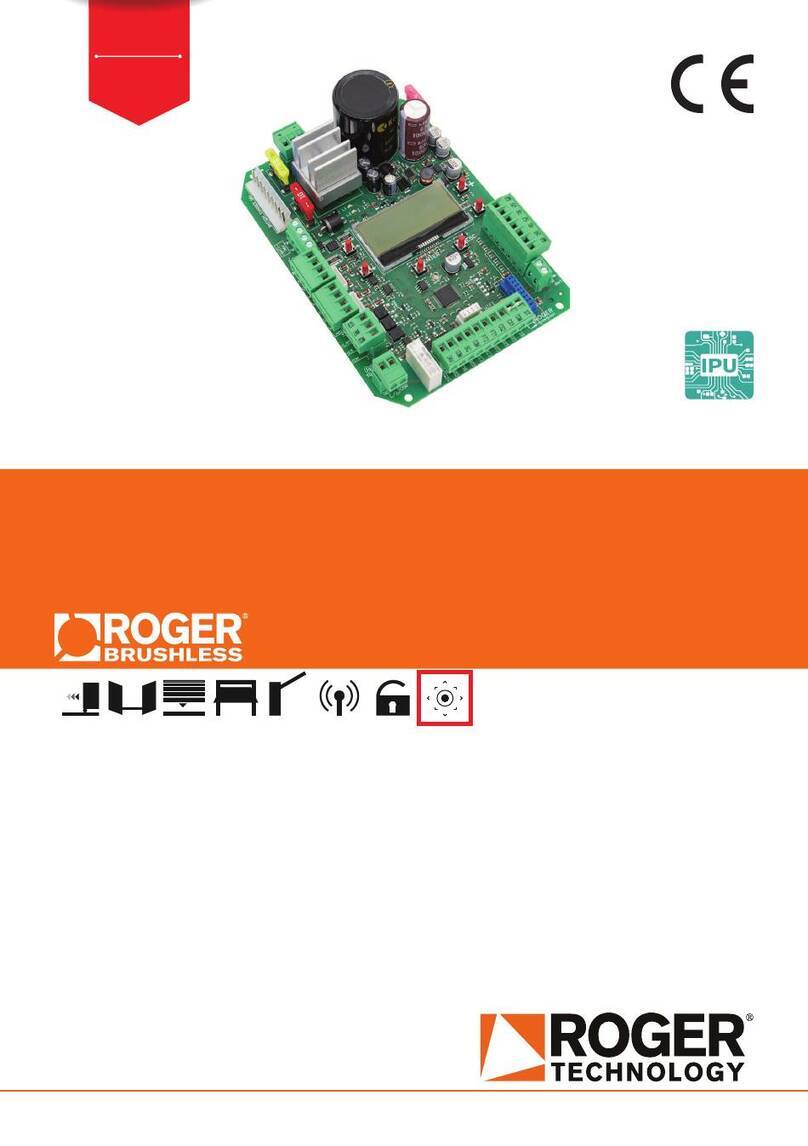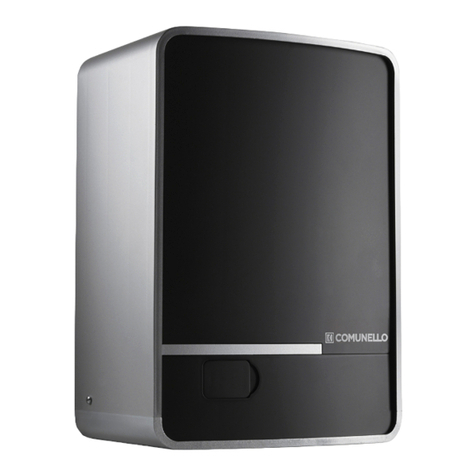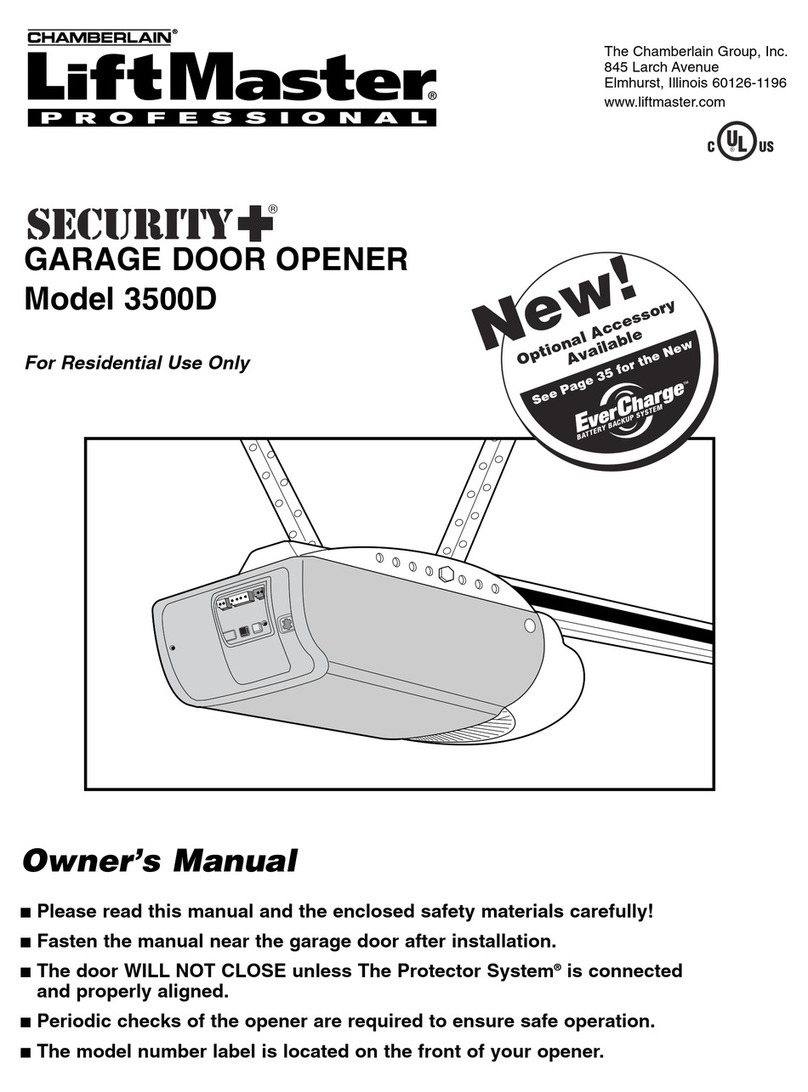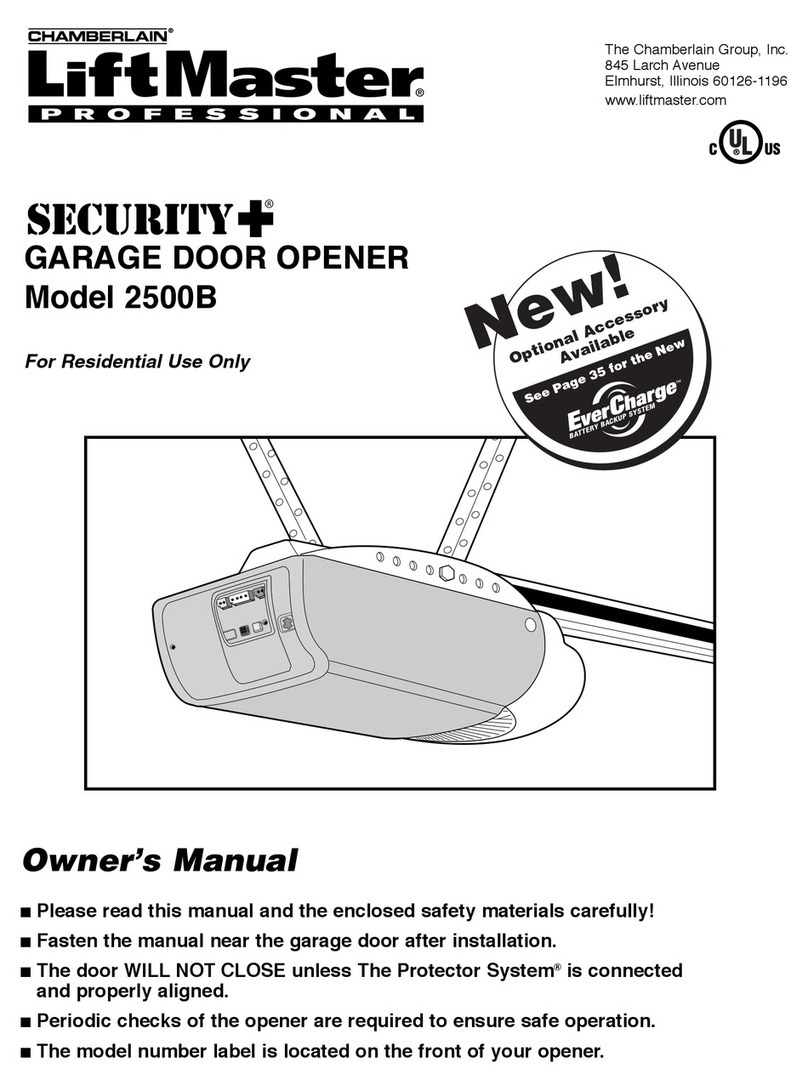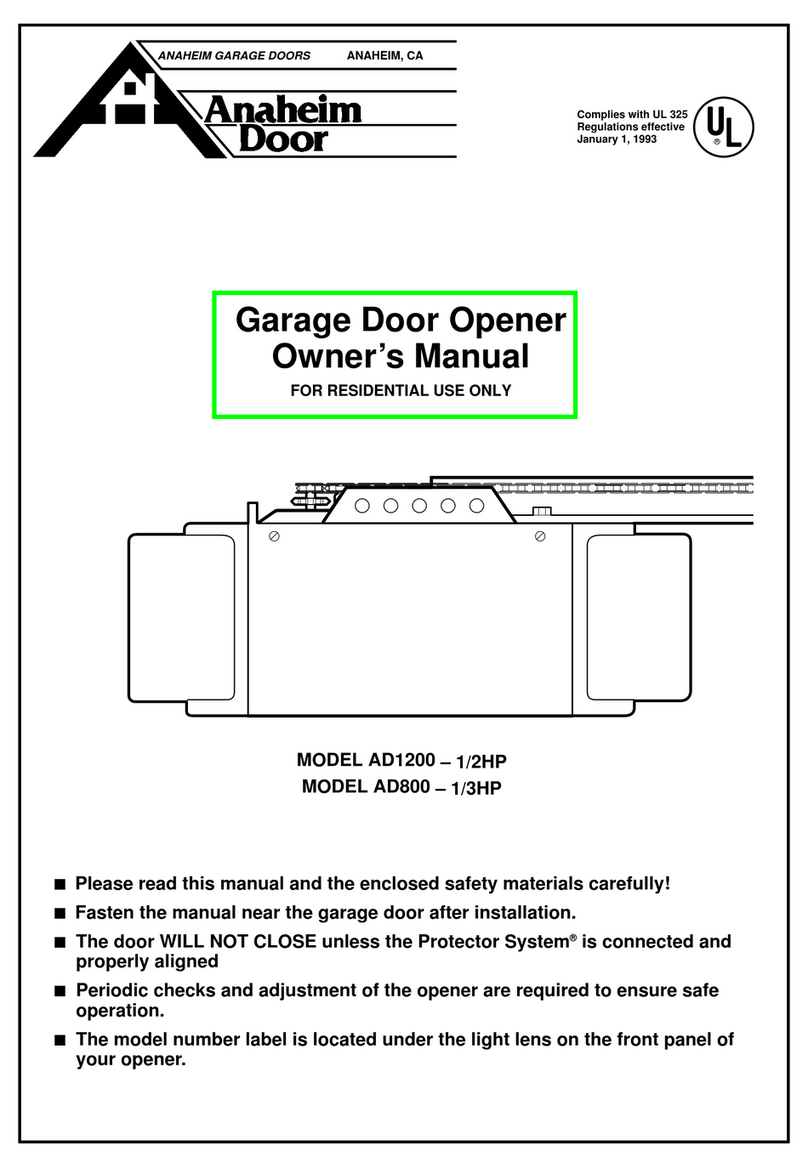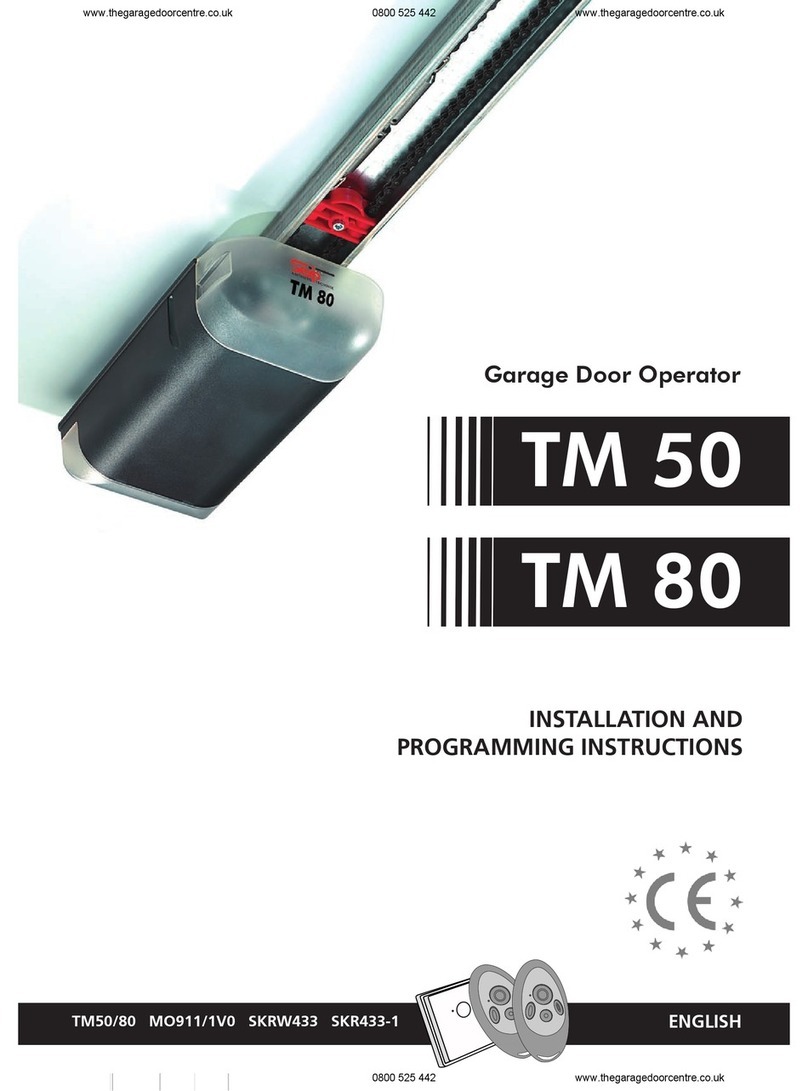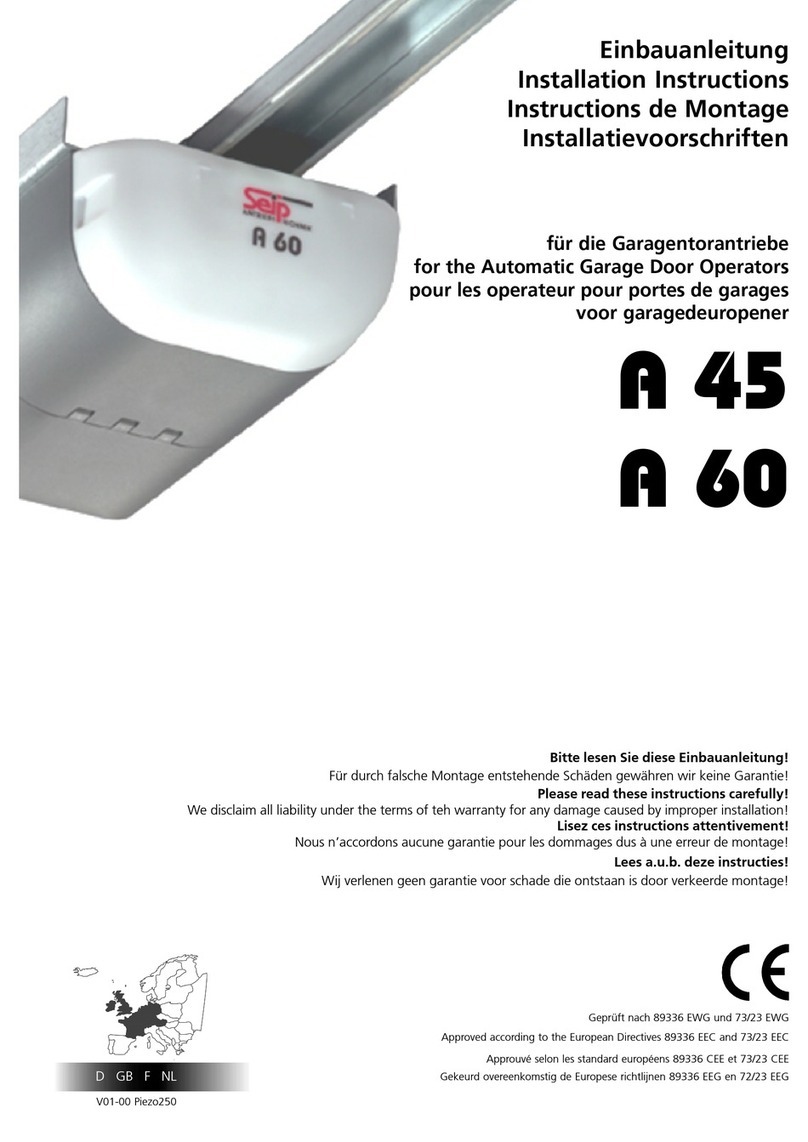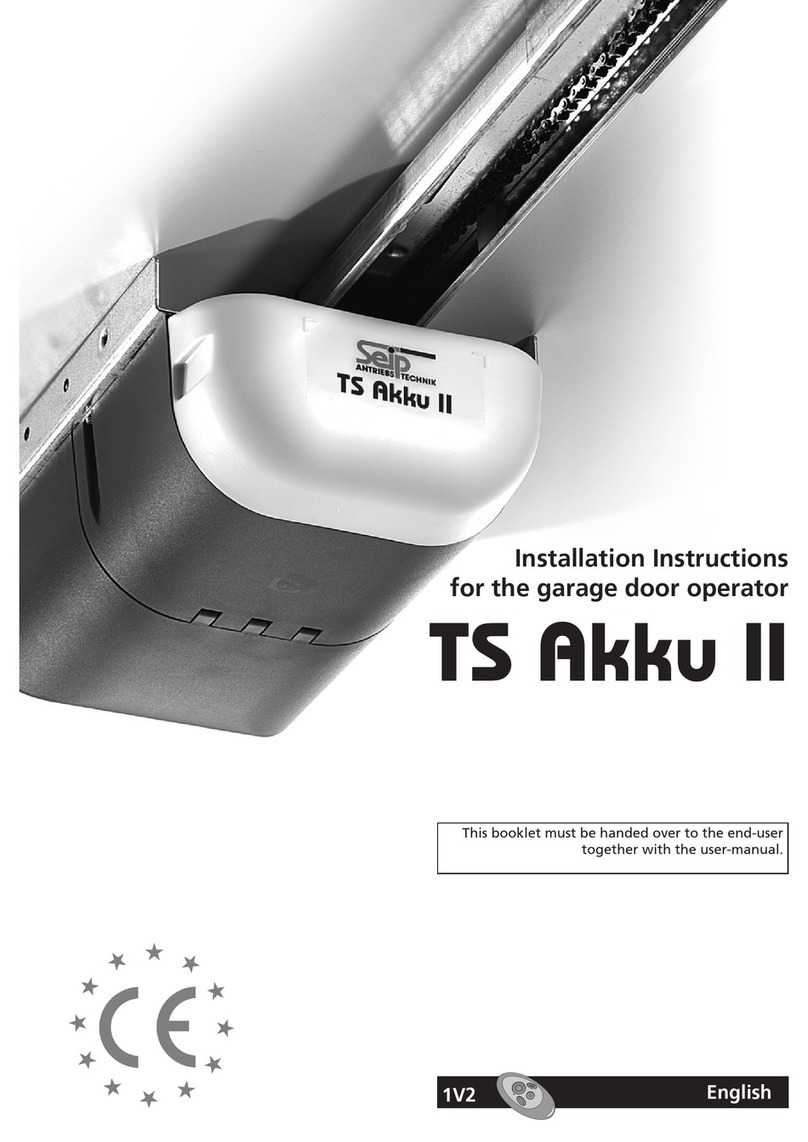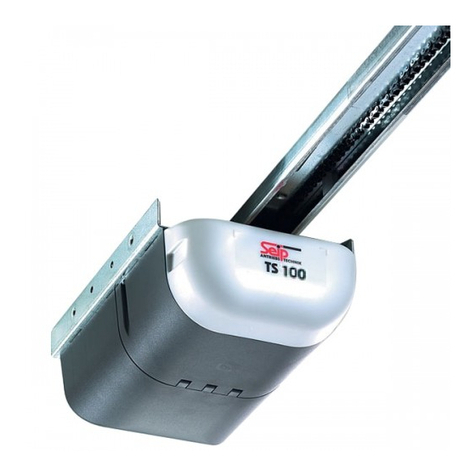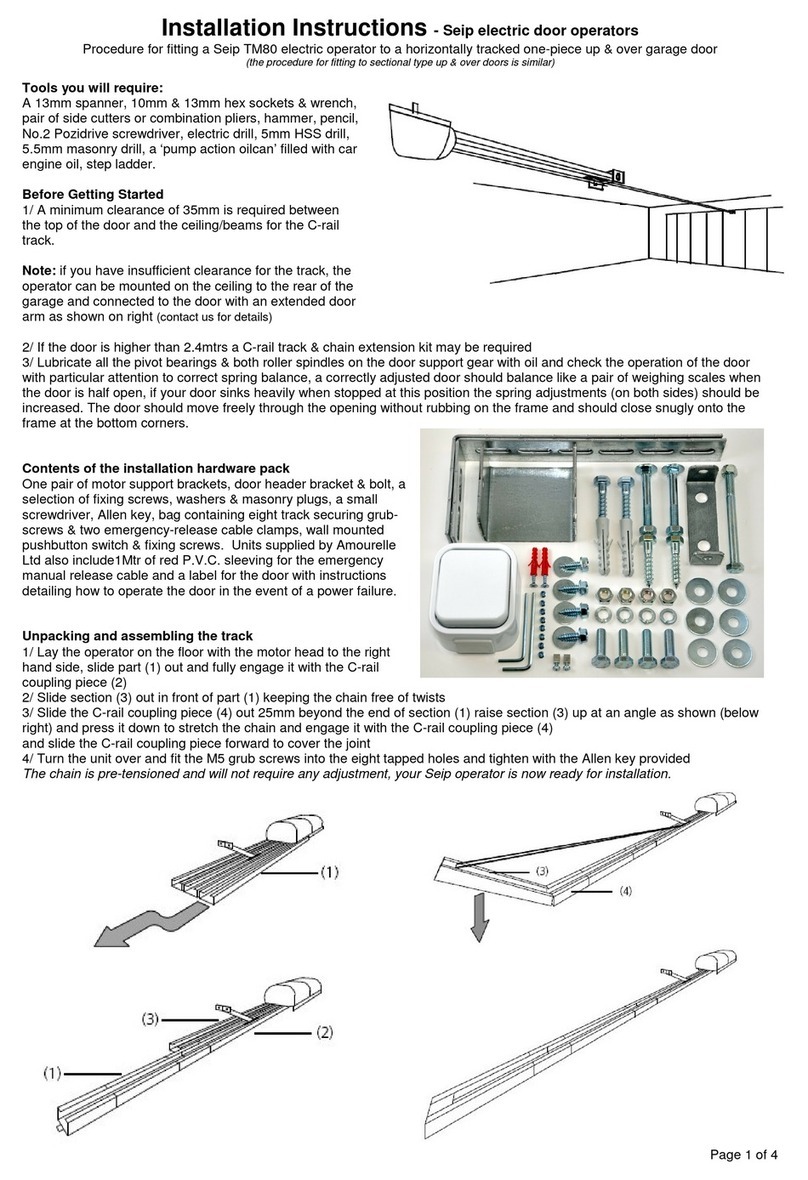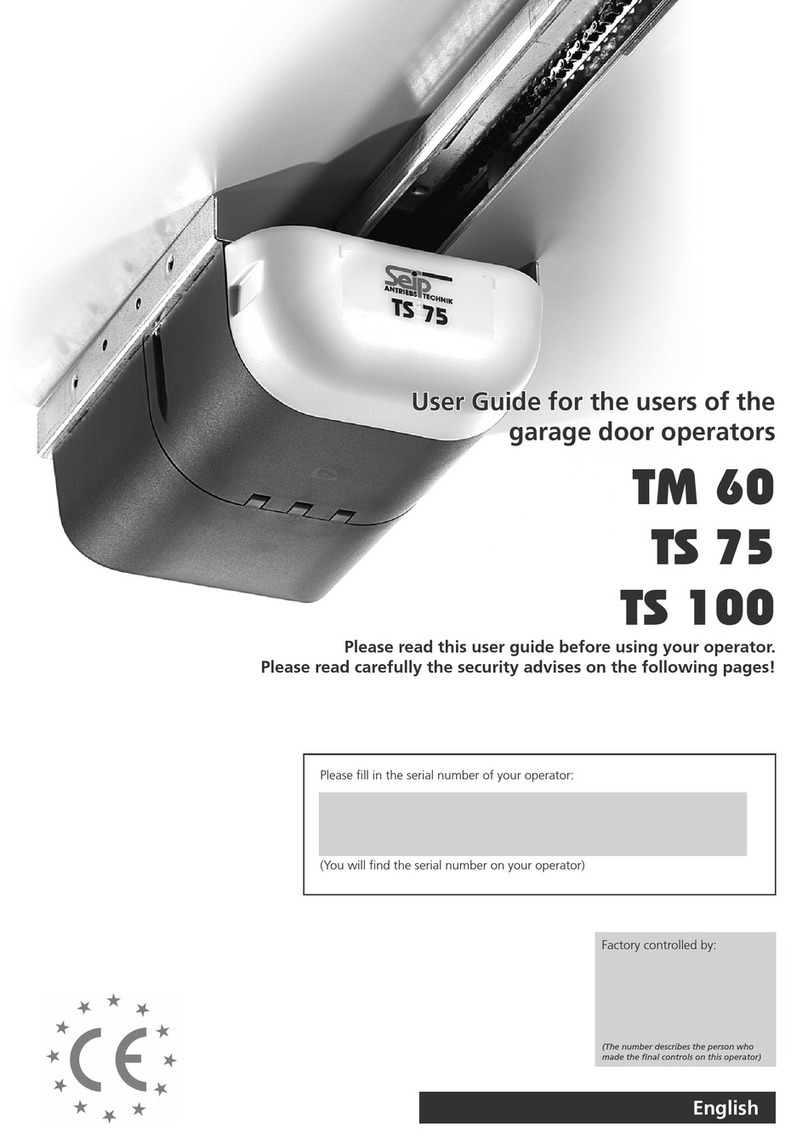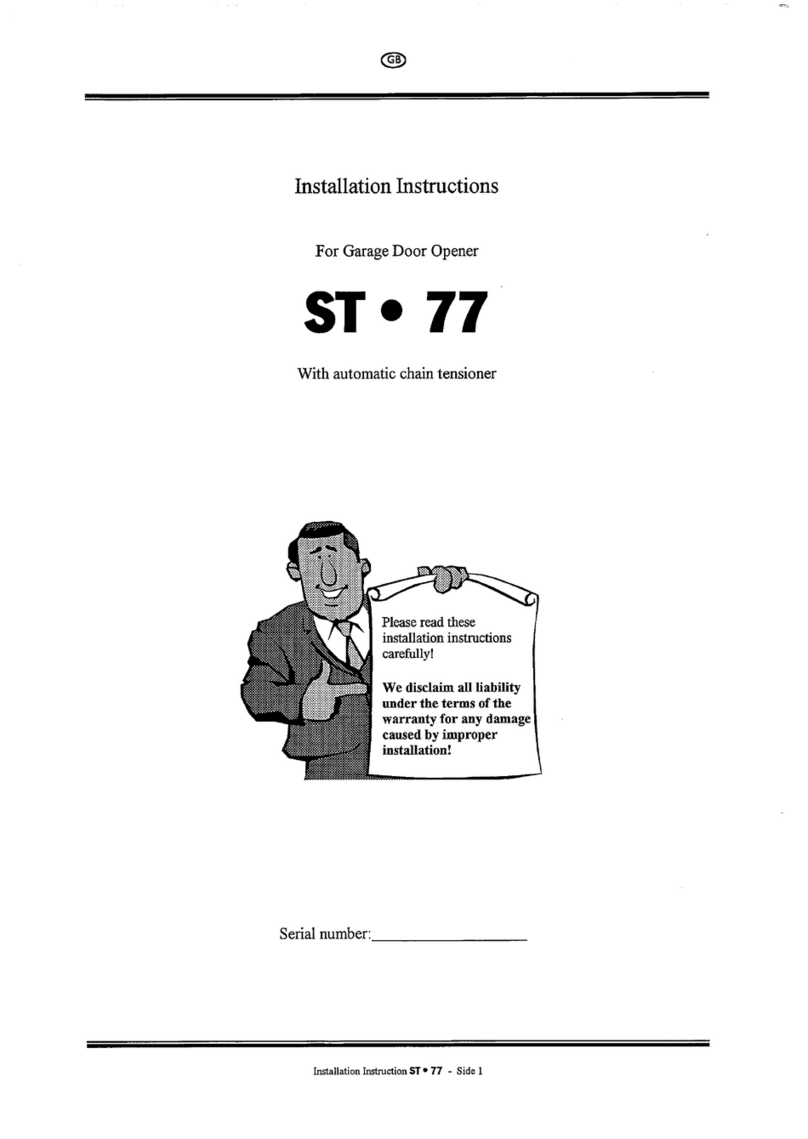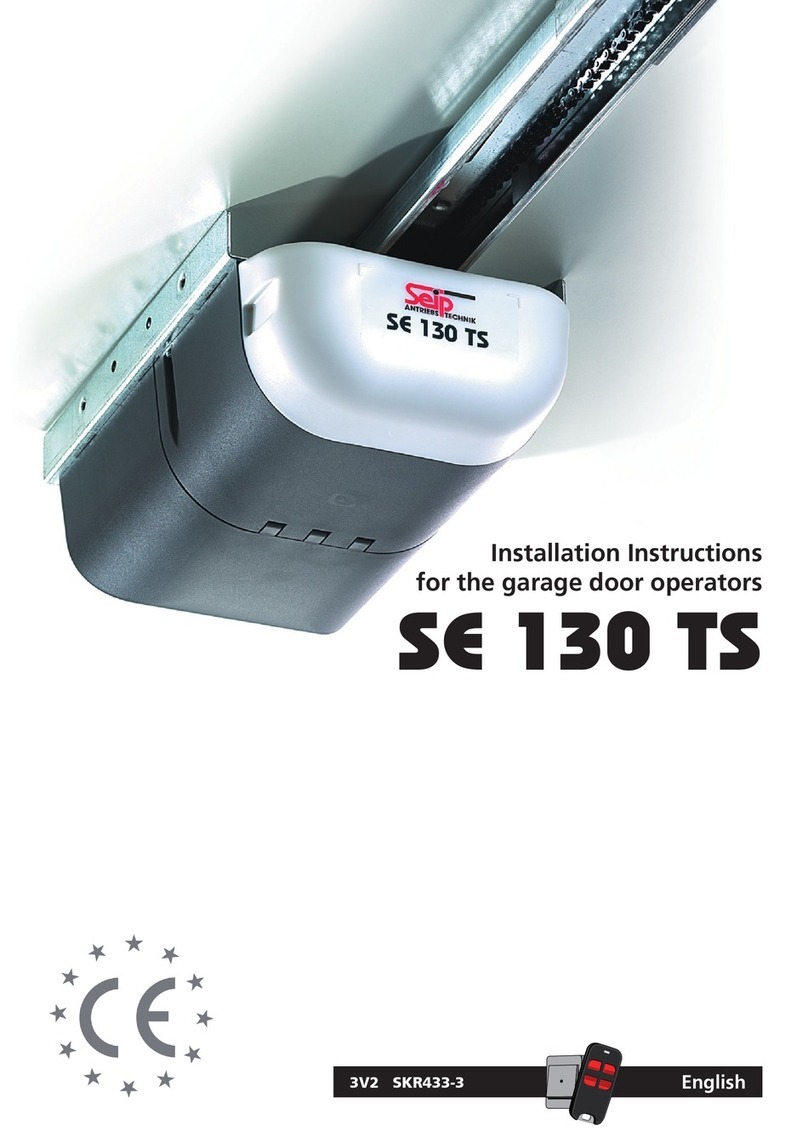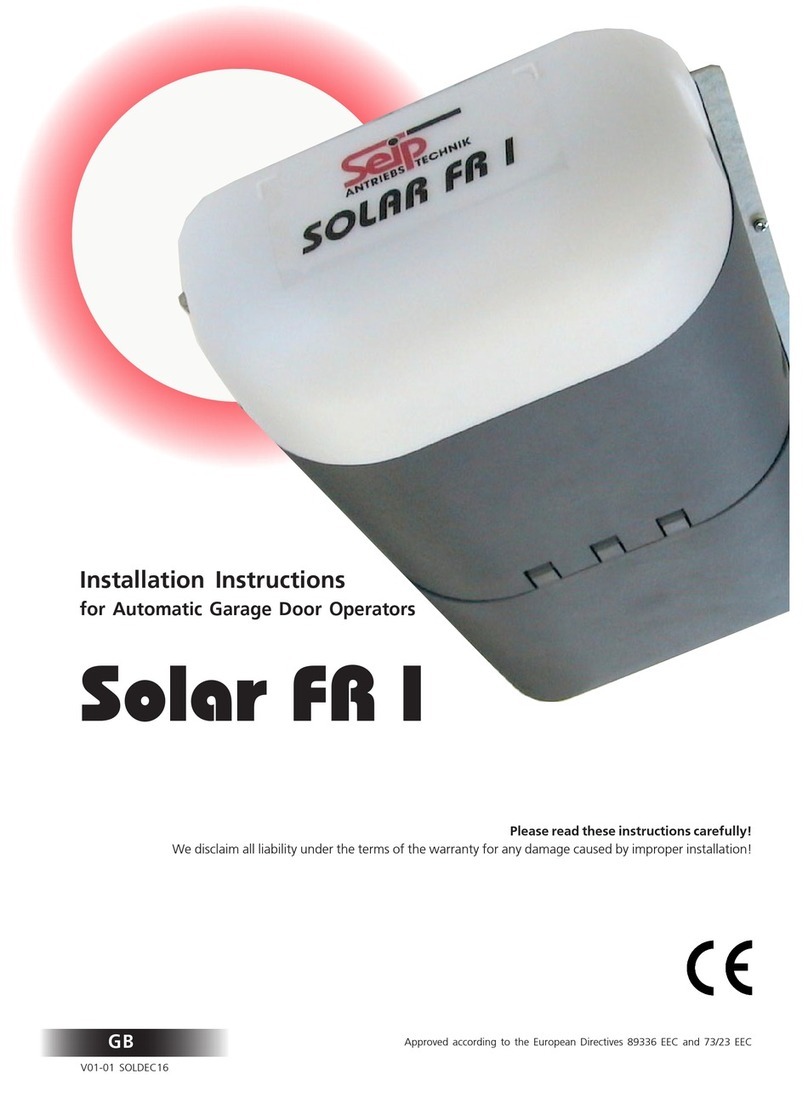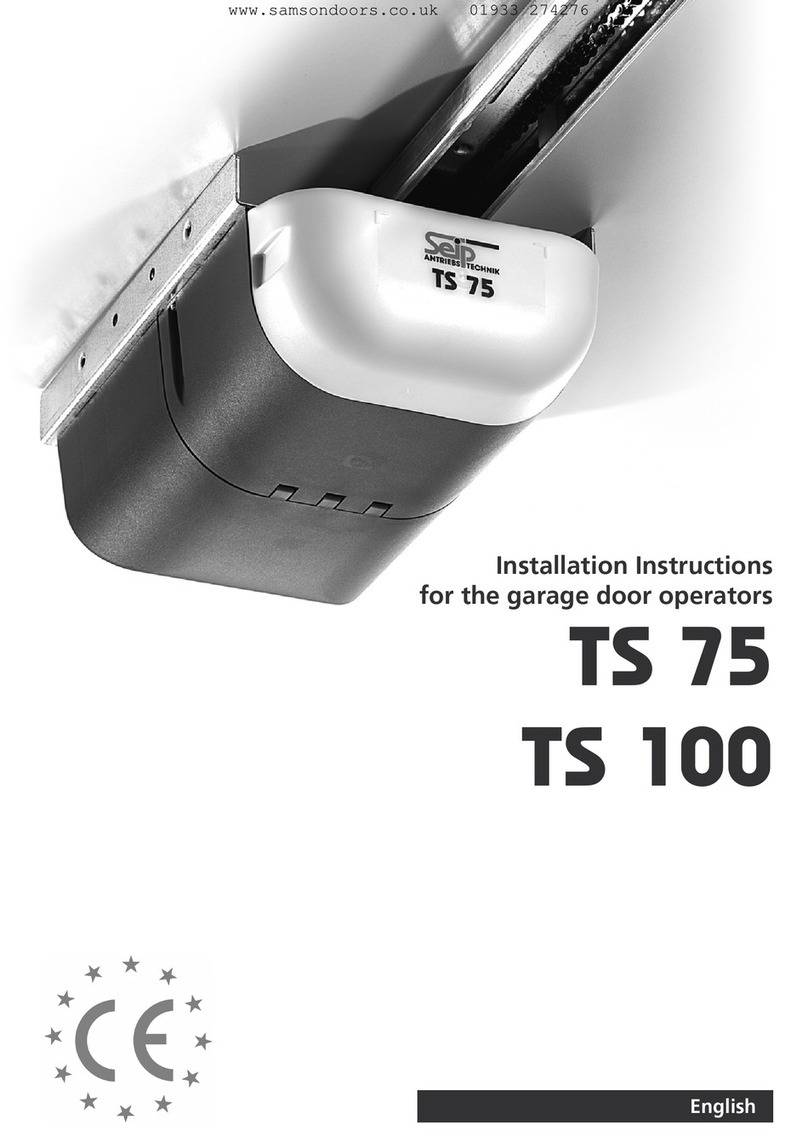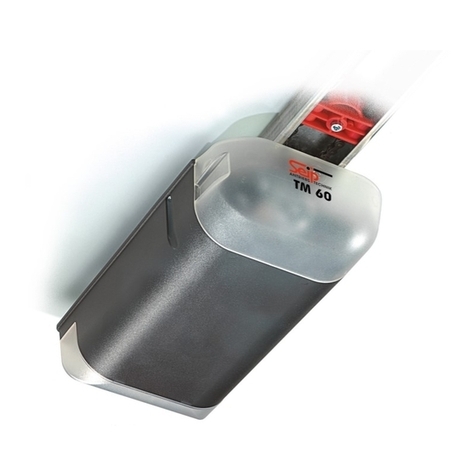HF-MODUL/RECEIVER CARD
KRAFT/
PRESSURE
LERN/LEARN
TEST/RUN
Vp
TEST/
FUNK
8k2/
DIAG
HF-MODUL/RECEIVER CARD
KRAFT/
PRESSURE
LERN/LEARN
TEST/RUN
Vp
TEST/
FUNK
8k2/
DIAG
1
2
3
4
5
6
7
8
0 - 55 56 - 75 76 - 95 96 -115 116 -170
8
7
6
5
4
14
Enhanced Adjustments
Reducing the Closing Speed
When using the standard programming procedure, then the clo-
sing speed is automatically set to maximum; for most
CE compliant garage doors no changes are necessary.
Why reduce the Closing Speed?
Reducing the closing speed will also reduce the forces and the
time for reversion which appear when the garage door hits an
obstacle.
The greater the weight of a garage door, the higher the mass that
needs to be moved, stopped and reversed in case of detection of
an obstacle. Especially on heavy doors this momentum may result
in a short peak force, leading to higher forces on the leading edge
. The lower the closing speed, the lower the momentum of force
and the peak forces.
When to reduce the Closing Speed?
The table besides provides information on suggested closing
speeds for different door weights. For new, CE-compliant doors
you should find the doors weight either labelled on the door or in
the instructions. Adjust the closing speed according to this infor-
mation, as far as a change is required.
When automating an older, non CE-compliant garage door, we
strongly recommend to use speed level 4 or lower (please also
refer to page 3).
Programming the Closing Speed
The programming of the closing speed must be made before
running the learning cycle. If, however, the learning cycle was
already completed, it must be run again after changing the closing
speed.
1.) The operator is switched on
2.) Press the red LEARN-button and keep it pressed. Press the
black TEST-button in addition and keep both buttons pressed for
approx. 3 seconds.
3.) The operators light starts blinking and the red LED „Diag“
blinks in intervalls; the buttons can now be released.
4.) The LED „Diag“ is blinking in intervalls (8 blinks followed by a
short break) - indicating the factory pre-set speed level 8.
5.) Each press of the TEST-button will reduce the closing speed by
one level, each press of the LEARN-button will increase the speed.
After readjusting the speed, wait for the short break between the
intervalls and count the number of blinks from there to check the
entirely adjusted speed level.
6.) Once you reached the wanted closing speed level, press the
LEARN-button and in addition the TEST-button and keep both
pressed for approx. 1 second.
7.) The closing speed is now adjusted and the operator is now
in the ordinary learning mode (the operators light and the LED
„Diag“ are blinking constantly). If the limit-switches were adjusted
already, you can now start the learning cycle by shortly pressing
the red LEARN-button.
Otherwise you can now adjust the limit-switches (please refer to
pages 10 and 11) and then start the learning cycle.
Quick Reference „Ajusting the Closing Speed“
1.) First press LEARN button,
then in addition TEST-button,
keep both pressed for 3 sec.
The operators light begins blinking
when the buttons are pressed
2.) Red LED „Diag“ begins to
blink in intervalls
Release both buttons when the LED
„Diag“ starts blinking
Factory pre-set: 8 blinks followed by
a short break (= max. speed)
3.) Reduction of speed by
pressing the TEST button
Each press on the TEST button
reduces the closing speed by one
level (pressing the LERN button will
increase the speed).
Wait for the break and count the
number of blinks from there to
check the entire adjustment.
4.) First press LEARN button,
then in addition TEST-button
and release both
The operator is now in the ordinary
learning mode; the operators light
and the LED „Diag“ are now blin-
king simultaneousely.
5.) Adjust the limit-switches and start the learning-cycle.
If changes to the soft modes are necessary, then please refer to page
11.
If the limit-switches had been adjusted previousely, the learning-cycle
can be started instantly by shortly pressing the LERN button.
Speed Level (No. of blinks of
the LED „Diag“)
Closing Speed (cm/sec.)
1 6 cm/sec.
2 6,5 cm/sec.
3 7,5 cm/sec.
4 9,5 cm/sec.
5 10,5 cm/sec.
6 11,5 cm/sec.
7 12,5 cm/sec.
8 14,5 cm/sec.
Speed Level
Door
Weight
in kg
Printed Circuit Board: Adjustments and Connections




















